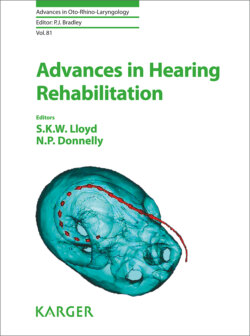Читать книгу Advances in Hearing Rehabilitation - Группа авторов - Страница 46
На сайте Литреса книга снята с продажи.
Introduction
ОглавлениеPer-Ingvar Brånemark’s 1960 discovery that titanium could be reliably osseointegrated was crucial in the development of dental implants, and also spawned the development of the majority of modern bone-conduction hearing implants (BCHIs) [1]. In 1977, a collaboration made up of Sahlgrenska University Hospital, Chalmers University of Technology and Brånemark Osseointegration Center started the design of the first BCHI [2]. This design consisted of a titanium screw, percutaneous abutment and transducer/sound processor. It had many advantages over its predecessors, including improved transmission of sound (particularly, high frequencies) and elimination of discomfort occurring due to pressure on the skin via Softband devices [3]. Between 1985 (when the first 10 cases were reported by Håkansson [2]) and 2014, there have been approximately 150,000 patients treated with osseointegrated devices [4], with 6,000–7,000 of those performed within the United Kingdom [5].
This paper summarizes the audiological benefits and patient outcomes related to the latest available devices. Additionally, the latest evidence for the use of BCHIs in single-sided deafness (SSD) as well as indications for the appropriateness of bilateral fitting of BCHIs in conductive hearing loss (CHL) will also be discussed.
